Sunny and 85°F. Wind 25-30 mph.
This is the second post from my visit to Route 66, between Luther and Arcadia. I saw a lot of insect activity and was lucky to capture a small portion of it. I shared some photos of bees already, but had many more! These bumblebees were too big to fit in the flowers, but that didn’t stop them. They kept pushing themselves further in and it looked hilarious. Hope it makes you smile.
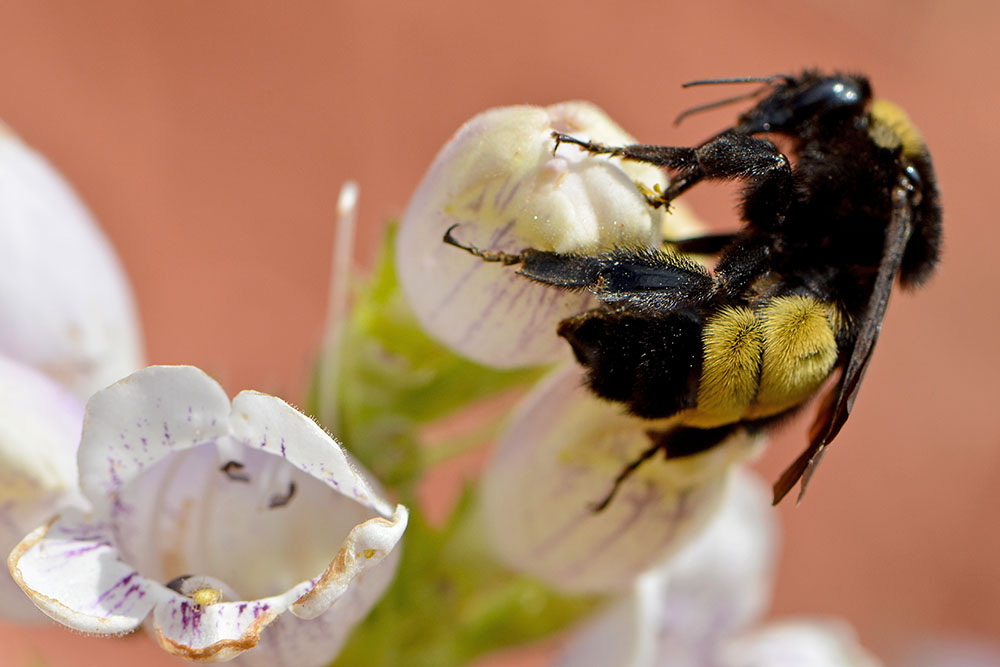

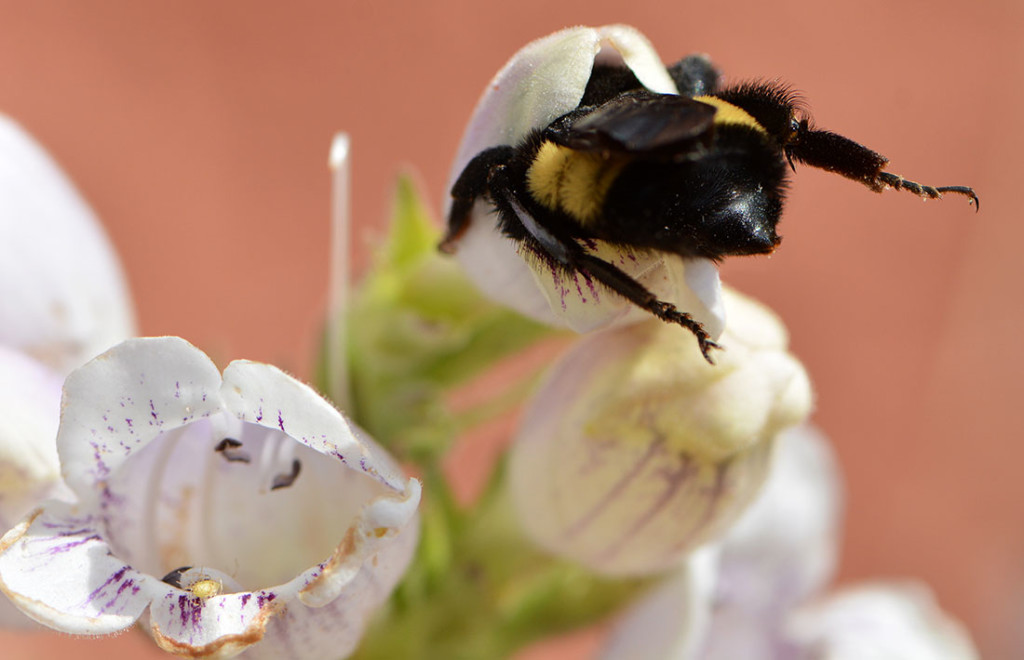
It’s a big ole bumblebee, and a pretty big flower!
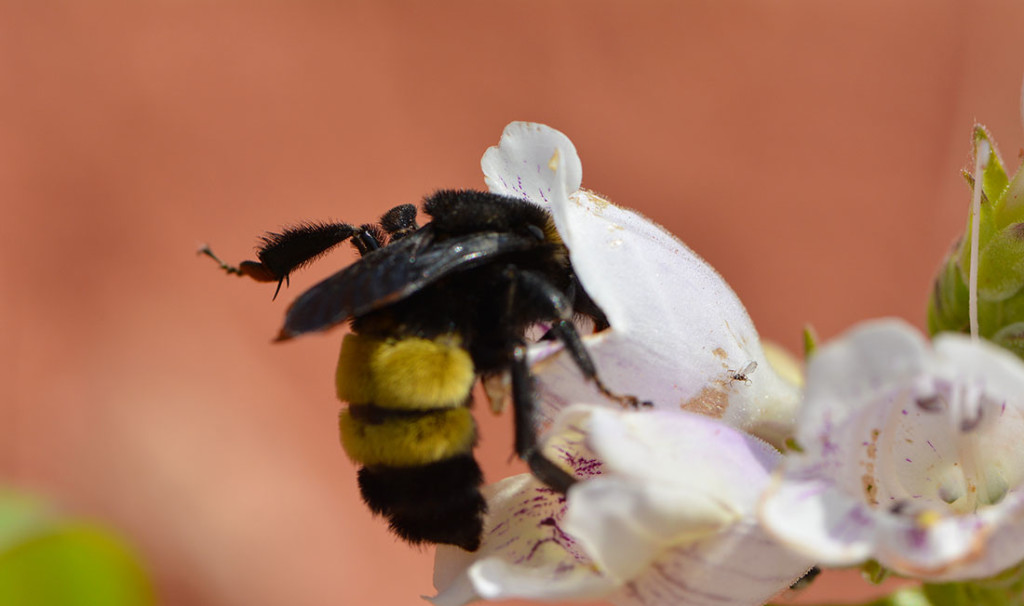
It dove right in!
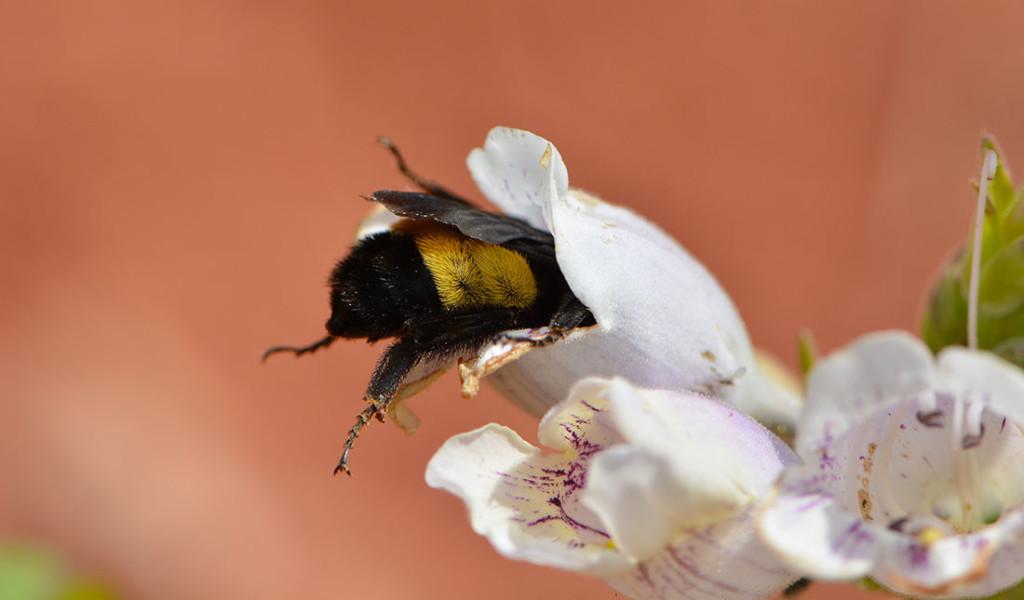
This bee is much smaller than the bumblebee. I think it’s a regular honey bee, but I don’t know my bees. He’s kinda scary looking from the front.

Spittle Bug nymph. You can see it’s head at the top of the foam (the dark part that isn’t a trapped ant). The foam is insulation from the elements and protection from predators as they molt and grow from stage to stage. They suck the sap out of plants and can cause damage in large numbers.
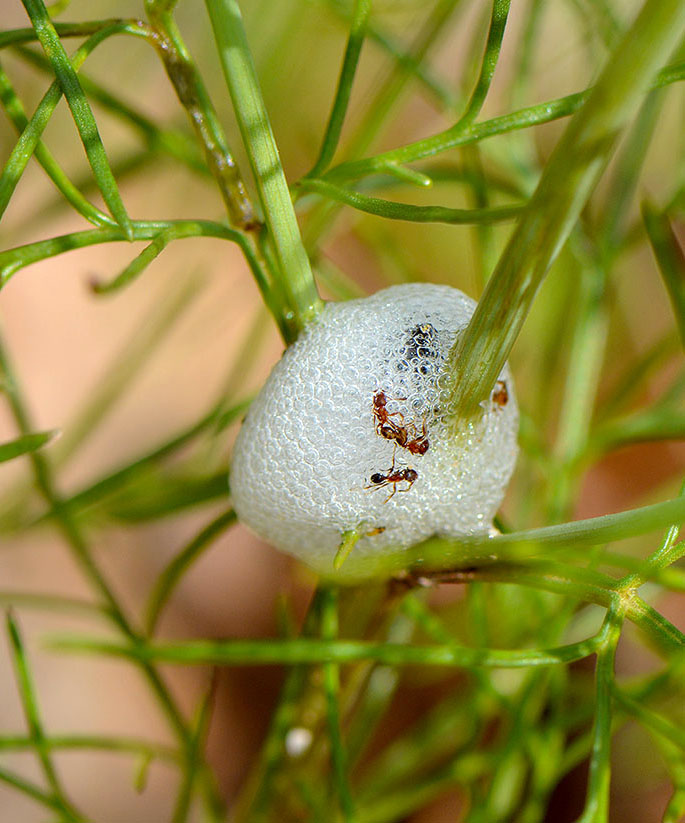
There were lots of Skipper Butterflies. I thought they might be moths because of their fuzzy bodies and dull colors. Skippers have the antennae clubs hooked backward, while the typical butterflies have club-like tips to their antennae, and moths have feathered or pectinate (comb-shaped) antennae. Skippers also have generally stockier bodies and larger compound eyes than other butterflies, with stronger wing muscles in the plump thorax, in this resembling many “moths” more than the other two butterfly lineages do (see Wiki).
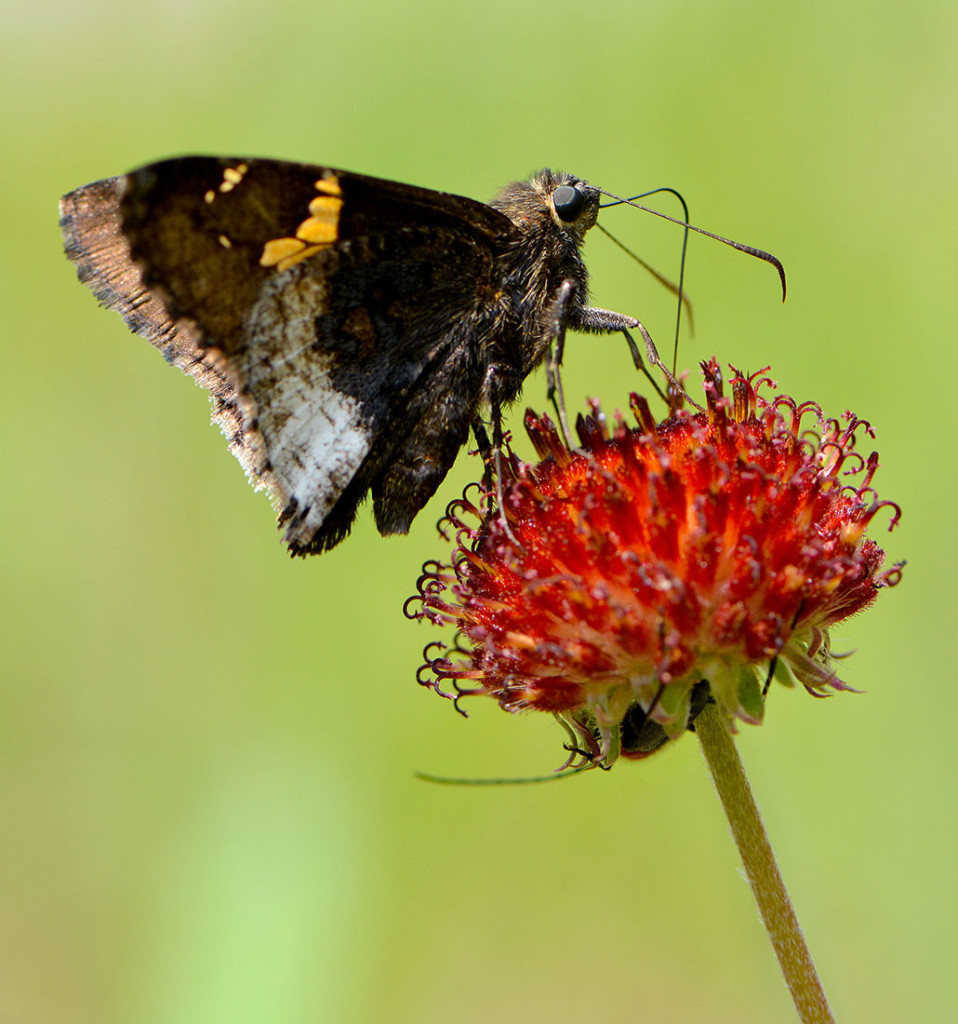
This is a variegated fritillary butterfly – note the club shaped antennae. This one is pretty beat up, no doubt this windy day is partially to blame.
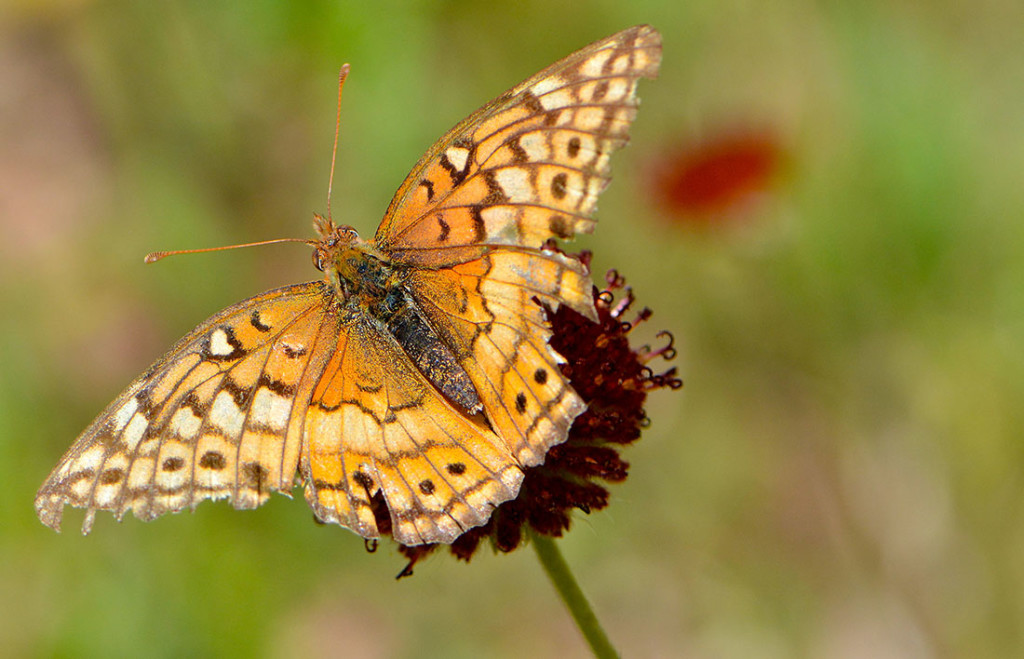
Metallic wood-boring beetle. So nice of it to pose on this gorgeous spiderwort flower.
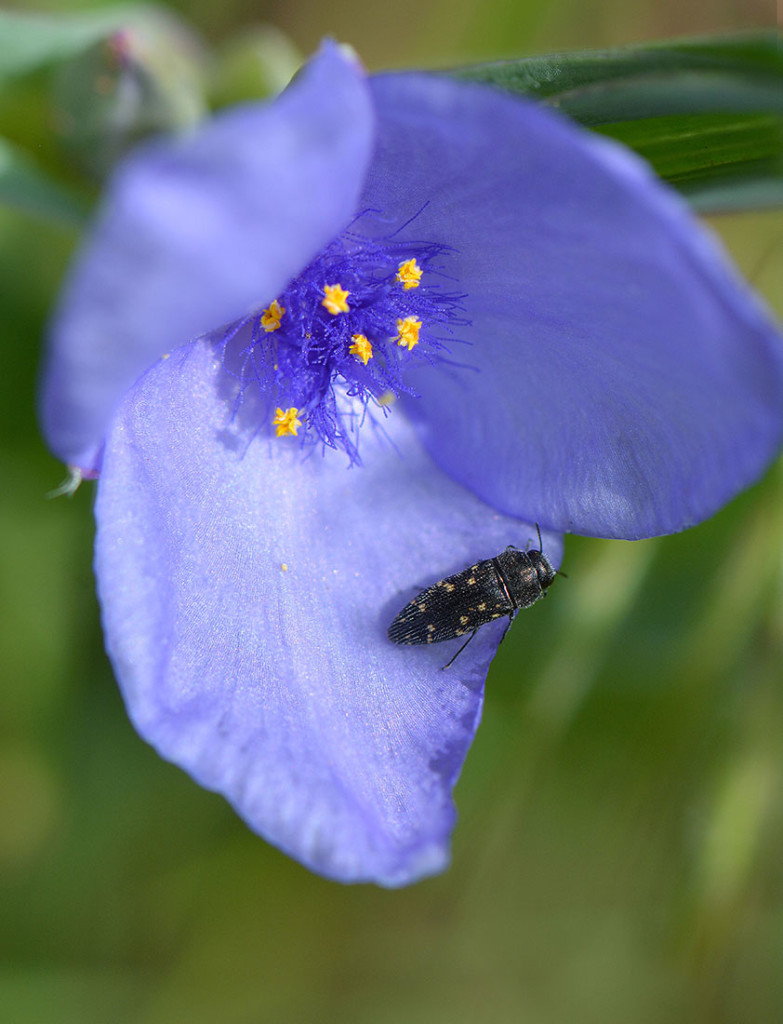
The scary looking bugs below are nymphs, a stage in the life of a bug. The bug lays eggs which hatch in about a week. The nymph molts 5 times before becoming a full-grown bug, and each stage looks a little different. I think this is a Cactus Coreid bug.
For something a little less creepy, see the hair like growths on this cactus? That is something I never knew happened. It’s prickly pear cactus Areoles – which can produce either flowers or spines.
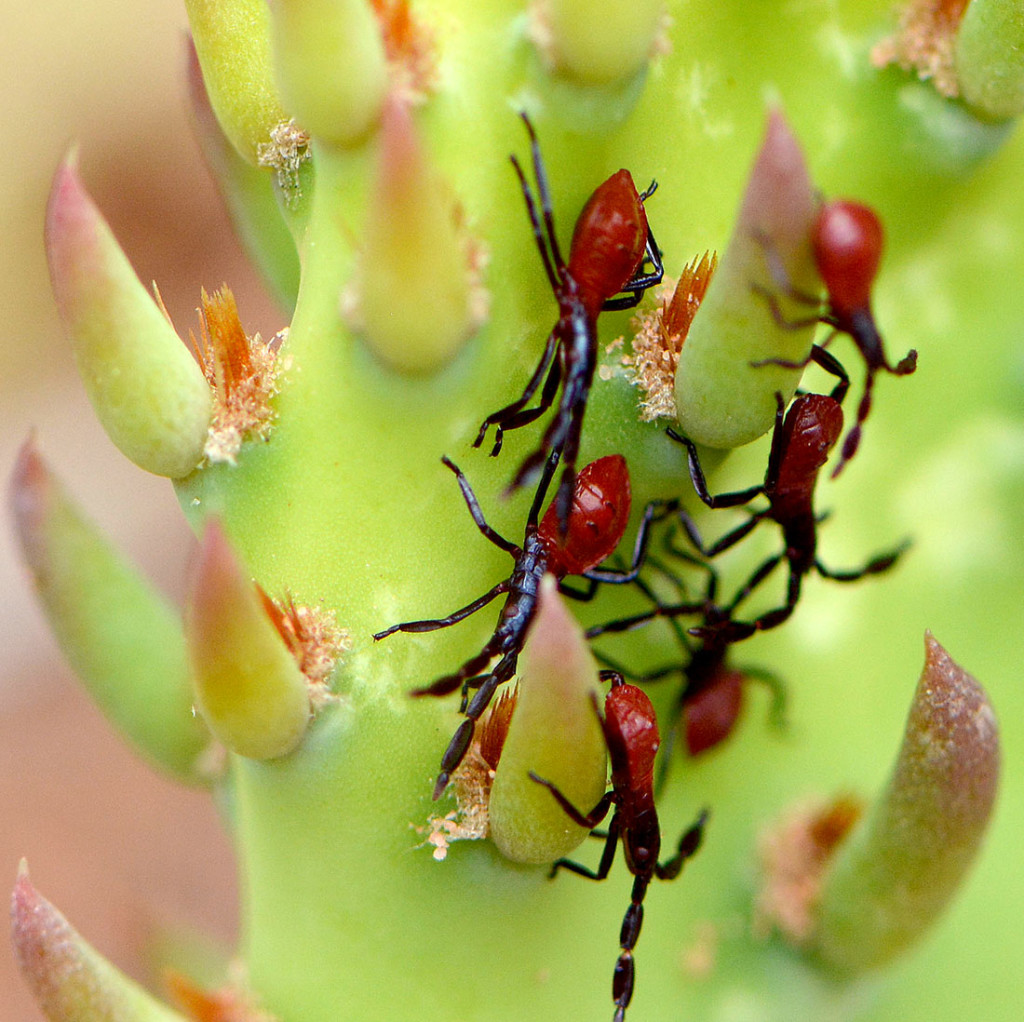
Now for the Wheel bug nymph. Look at that mouth! They pierce with this beak to inject salivary fluids that dissolve soft tissue, then they suck out the fluids. Yuck. They are in the assassin bug family. The adult Wheel bug is large and grey in color, I saw one for the first time last summer. Crazy looking things. Don’t play with these creatures. They are beneficial to us because they eat bad bugs that damage our produce, but they can sting – and it’s said to comparable to a wasp sting in pain. I’m not sure this little guy could inflict a painful sting yet, but I’m not going to find out. This image is magnified, the bug is quite small.
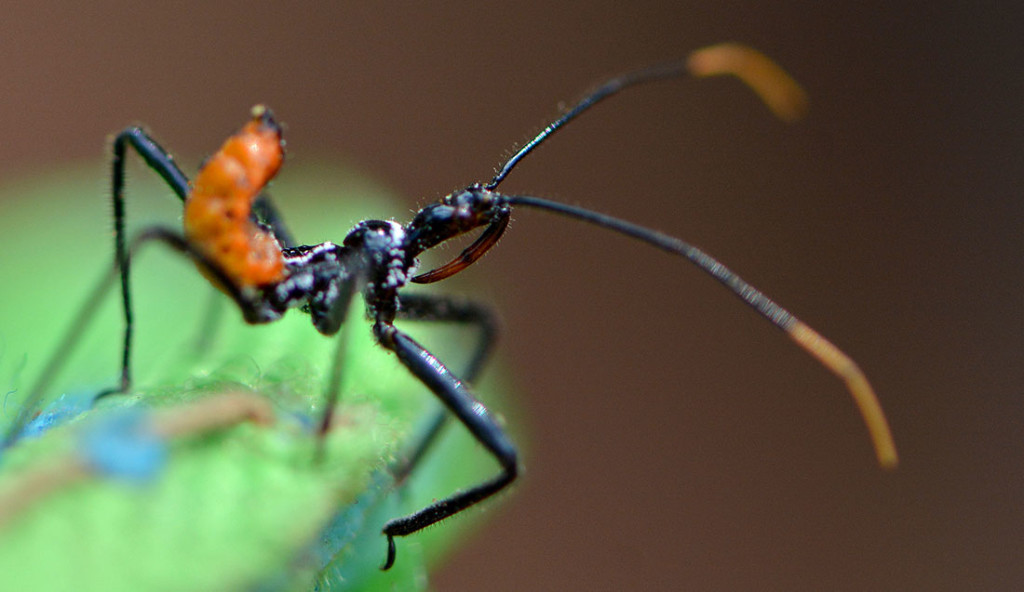
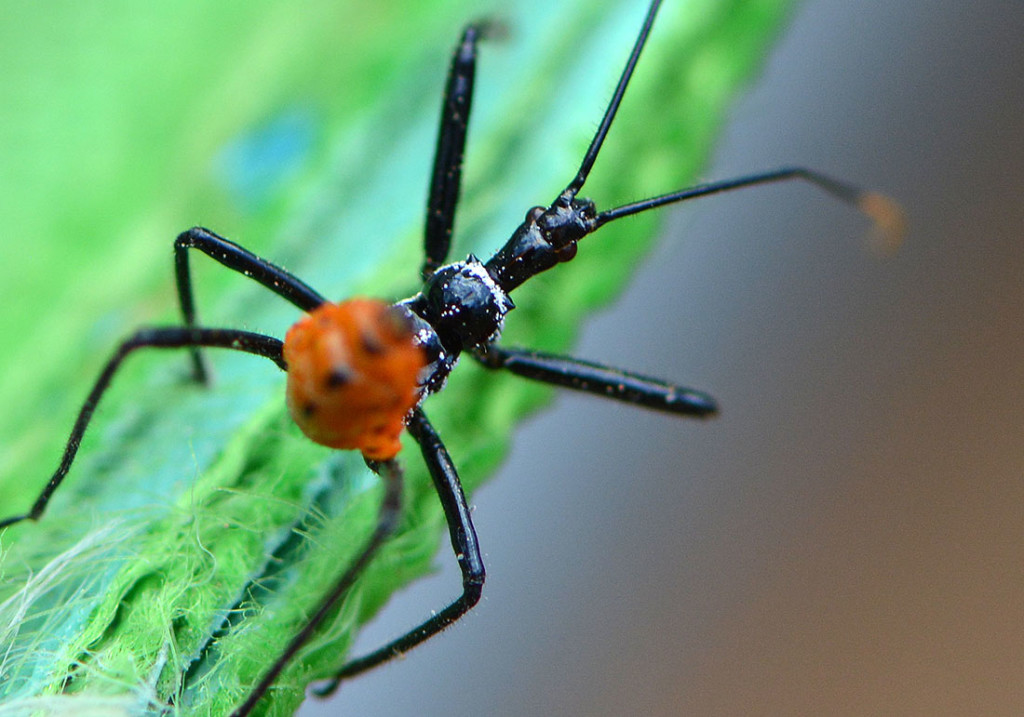
You can get a feel for the magnification from the photo above and below – the nymph is on a nylon woven lawn chair – you can see the fibers.
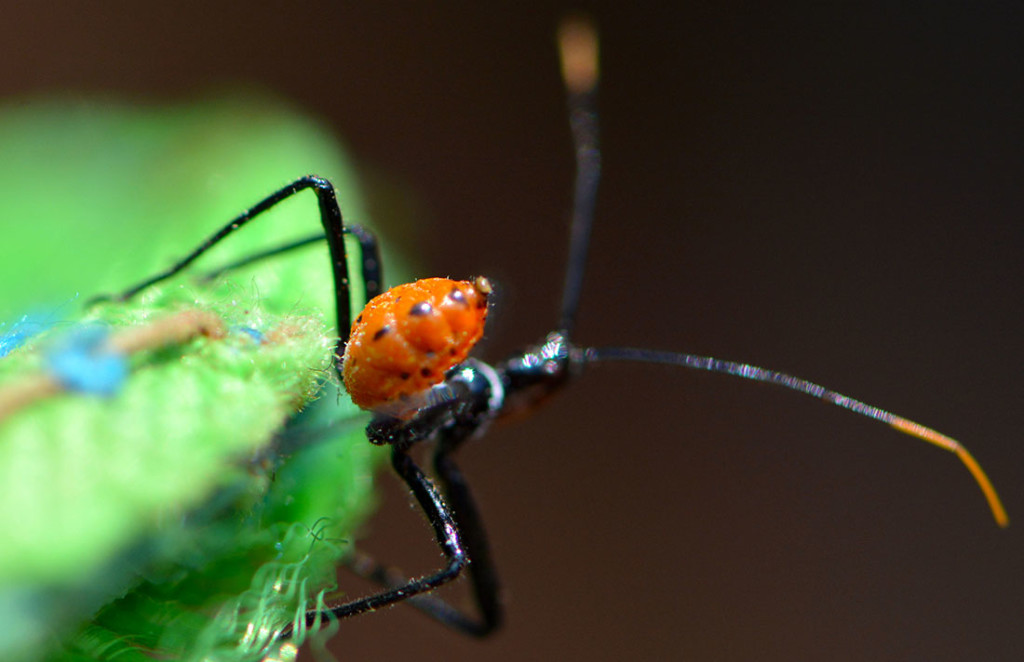
It was a popular chair! Below is a large spider on the same chair.
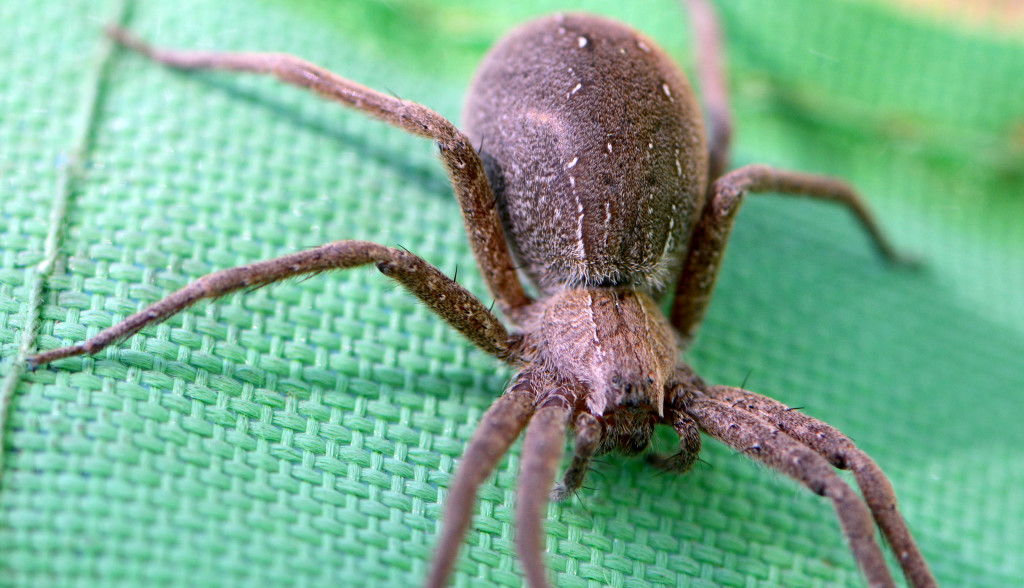
Considering I in no way set out to look for bugs, I’d say the day was a success. I learned a lot when I looked up these critters. Get out there and look at a bug, but don’t touch it!
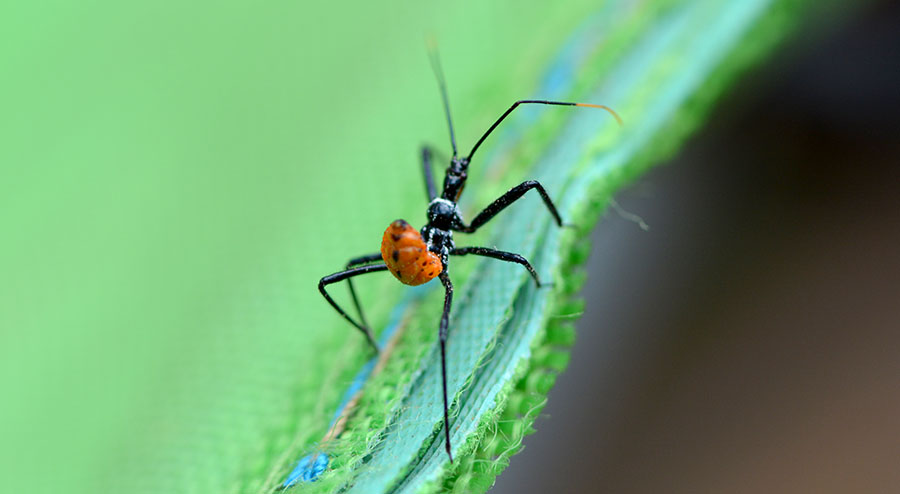
Awesome pictures & information about all of them.
Really great pictures